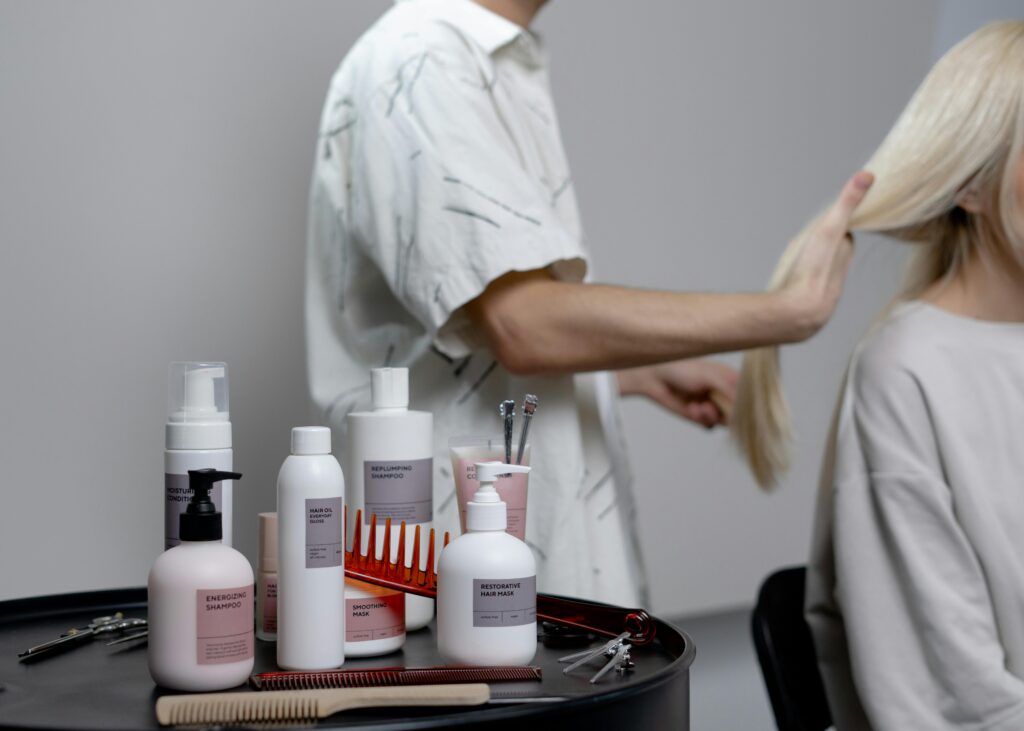Keratin treatments have become a popular choice for women seeking smooth, shiny, and manageable hair. These treatments are particularly appealing for those who struggle with frizz, unruly curls, or damaged locks. However, as with any beauty procedure, it’s essential to understand what a keratin treatment entails, its potential benefits and risks, and how to maintain the results for long-lasting effects. Armed with this knowledge, you can make an informed decision about whether a keratin treatment is right for you.
Keratin is a structural protein found naturally in hair, skin, and nails. It acts as a protective barrier, shielding hair from environmental damage and maintaining its strength and elasticity. Over time, factors such as heat styling, chemical treatments, and pollution can deplete the natural keratin in your hair, leaving it dry, brittle, and prone to frizz. Keratin treatments work by replenishing this protein, coating the hair shaft, and sealing the cuticle to create a smooth, glossy finish.
One of the most significant benefits of keratin treatments is their ability to reduce frizz and enhance manageability. By smoothing the hair’s surface, these treatments make styling faster and easier, saving precious time in your daily routine. Women with curly or wavy hair often appreciate the way keratin treatments loosen their natural curl pattern, creating a softer, more relaxed look. Additionally, the treatment can add a noticeable shine, giving hair a healthy, polished appearance.
Keratin treatments are also known for their ability to protect hair from future damage. The protein layer created during the process acts as a shield against environmental aggressors such as humidity, UV rays, and pollution. This can be particularly beneficial for women who live in areas with high humidity or intense sunlight, as it helps maintain the integrity of the hair. Furthermore, the treatment can temporarily strengthen weakened hair, reducing breakage and split ends.
Despite these benefits, it’s important to consider the potential risks associated with keratin treatments. Many keratin formulas contain formaldehyde or formaldehyde-releasing agents, which help bind the protein to the hair. Formaldehyde is a known irritant and has been linked to health concerns, particularly when inhaled during the application process. To minimize exposure, choose salons that offer formaldehyde-free keratin treatments and ensure that the application is performed in a well-ventilated area by a trained professional.
Another consideration is the impact of keratin treatments on hair health. While the treatment can create the appearance of stronger, healthier hair, it is not a permanent fix for damaged strands. Over-reliance on keratin treatments or improper application can lead to long-term damage, including weakened hair and increased dryness. It is essential to discuss your hair’s condition with your stylist to determine whether a keratin treatment is appropriate for you.
Maintaining the results of a keratin treatment requires a dedicated hair care routine. Using sulfate-free shampoos and conditioners is crucial, as sulfates can strip the keratin from your hair and shorten the lifespan of the treatment. Avoid washing your hair too frequently, as this can also diminish the effects. Many women find that washing their hair two to three times a week is sufficient to keep it clean while preserving the treatment.
Heat styling should be approached with caution after a keratin treatment. While the treatment itself reduces the need for excessive heat, using high temperatures regularly can still cause damage and shorten the longevity of the results. Opt for a heat protectant spray when styling and use tools with adjustable temperature settings to minimize the risk of overheating your hair.
Another critical aspect of maintenance is scheduling regular touch-ups. Keratin treatments are not permanent and typically last between three to six months, depending on the product used and your hair care routine. As the treatment gradually wears off, you may notice the return of frizz or your natural curl pattern. Regular touch-ups can help maintain the smooth, sleek appearance of your hair without overburdening it with repeated full treatments.
For women considering a keratin treatment, consulting with a professional stylist is the best way to ensure a safe and successful experience. A stylist can assess your hair’s condition, recommend the most suitable treatment, and provide guidance on aftercare. Additionally, they can help you set realistic expectations about the results, ensuring that you are fully informed before committing to the process.
Keratin treatments offer a transformative solution for women seeking smoother, shinier, and more manageable hair. By understanding the benefits, risks, and maintenance tips associated with these treatments, you can enjoy the confidence that comes with healthy, beautiful hair while protecting your long-term hair health. Whether you are battling persistent frizz, looking to enhance your natural texture, or simply seeking a way to streamline your hair care routine, a keratin treatment may be the perfect choice for achieving your hair goals.





